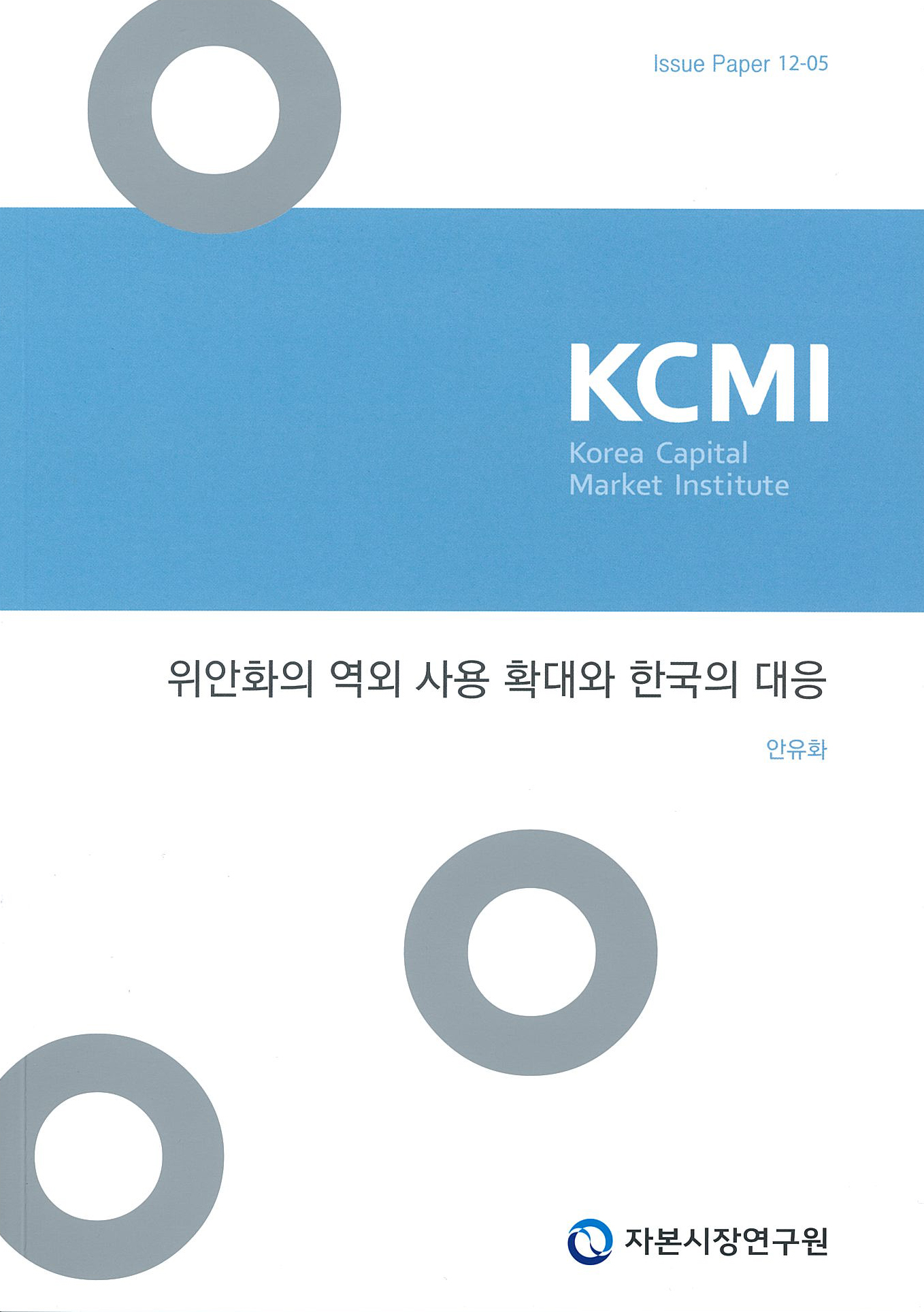Find out more about our latest publications

Chinese Yuan Internalization and Korea’s Responses
Issue & Policy 12-05 Nov. 01, 2012
- Research Topic Capital Markets
In the wake of the 2008 global financial crisis, China is exerting more efforts to increase the use of Chinese yuan in global transactions. These actions are designed to tackle the problems caused from the weak dollar; the loss in foreign reserves, and the rise in costs of managing those reserves. Another reason China is pushing for yuan internationalization is so that it has a bigger say in international financial markets. China has presented a three-phased internationalization plan to make the yuan: 1) an international settlement currency; 2) an international investment currency; and finally, 3) an international reserve currency. At present, it’s in between the first and second phases, focusing on positioning it as a settlement currency in trades and strengthening the yuan’s investment currency function. With China’s international political and economic status rising, yuan internationalization is expected to accelerate.
An internationalized currency will require fully opened capital markets, and a free-floating exchange rate regime, which will not be the case for China, at least for the near future. Instead, China is building an offshore yuan hub. Currently,many financial leaders, e.g., Hong Kong, Singapore, and London, compete with each other to use it as a driver for financial industry development.
Korea has expanded the size of its currency swap with China and also recently kicked off negotiations for a Korea-China free trade agreement, and these will lay the groundwork for an offshore yuan hub. In this regard, Korea has the optimal environment: Large trading volume with China, geographical proximity, and a large number of Chinese tourists visiting Korea. Therefore, Korea should thoroughly review the possibility of becoming an offshore yuan hub before it’s too late. Yuan internationalization may be a prime driver for developing Korea’s financial industry. This, however, may pose some risk factors as well. With this in mind, Korea should establish its long-term strategy, which should provide a win-win structure for China and Korea.
Korean companies and financial institutions need to recognize China’s rising status in the global economy and the bright potential of yuan-related businesses, then take preemptive actions for necessary human resources and infrastructure. In trading settlements, for example, Korea should call for China to designate a clearing bank that will clear Korean financial institution’s yuan positions. Accordingly, the clearing bank, through a branch in China, needs to supply money to cover Korean financial institution’s yuan positions. As for financing, Korea has to attract more yuan deposits. Issuing yuan-denominated K-RMB bonds and being an RMB Qualified Foreign Institutional Investor (RQFII) will help Korea accommodate more yuan. Furthermore, a yuan asset management market should be established so that more yuan-denominated financial products are traded in Korea. Also necessary is raising Koreans’ awareness of an offshore yuan hub through internal efforts, e.g., organizing a task force team and hosting an international conference. Externally, Korea needs to establish a financial cooperation channel between Korea and China to communicate effectively and seek cooperation from China.